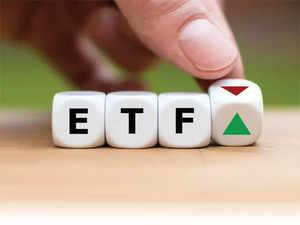 iStock
iStockVarious ETFs are trading in the range of 1% to 18% above their values. For instance, Motilal Oswal Nasdaq 100 ETF, a popular scheme with assets of 6,130 crore, and Nippon India ETF Hang Sang BeES with assets of 88 crore are trading between 5% and 18% over their NAVs.
“We have stopped market making. There is no fresh creation of units, due to the regulatory restrictions,” said Pratik Oswal, head of passive funds business at Motilal Oswal AMC. “There is a premium as prices are dependent on pure demand and supply.”

Mutual funds had stopped accepting fresh money into international funds from February 2, as the industry was close to the limit of $7 billion to invest in overseas securities.
There is no restriction on buying ETFs for investors as they trade on the exchange. Fund houses, however, cannot create fresh units as they are not allowed to invest in securities overseas. Since the demand for international funds continues and in the absence of fresh supply, there is a scarcity that’s driving up prices quoted on the exchanges. The gaps will shrink once the Reserve Bank of India increases the limits to invest abroad.
Investment advisers said buying at a premium to NAV will eat into returns when the NAV and market prices converge.
“Investors need to be very careful and ensure that they buy ETFs only close to the NAV,” said Harshvardhan Roongta, CFP, Roongta Securities. “If they have SIPs set up in such funds, they should close them and come back only when normalcy returns.”
Among other international ETFs, Mirae Hang Sang Tech ETF, Mirae NYSE Fang+ ETF, and Mirae S&P500 Top 50 ETF are trading at 1%-2% premiums.
ETFs, which are passively managed products, are bought and sold by investors on the exchange. Mutual funds often appoint market makers, who provide two-way liquidity to investors transacting in these ETFs, eliminating price anomalies. Large investors often approach the fund house separately for unit creation.
Since the start of April, Motilal Oswal’s Nasdaq 100 ETF has been trading at a 4-8% premium to its NAV. Hang Sang BeES, managed by Nippon Life India AMC, has been trading at a premium of 11%-19% over its NAV in the same period.










 Get Unlimited Access to The Economic Times
Get Unlimited Access to The Economic Times
